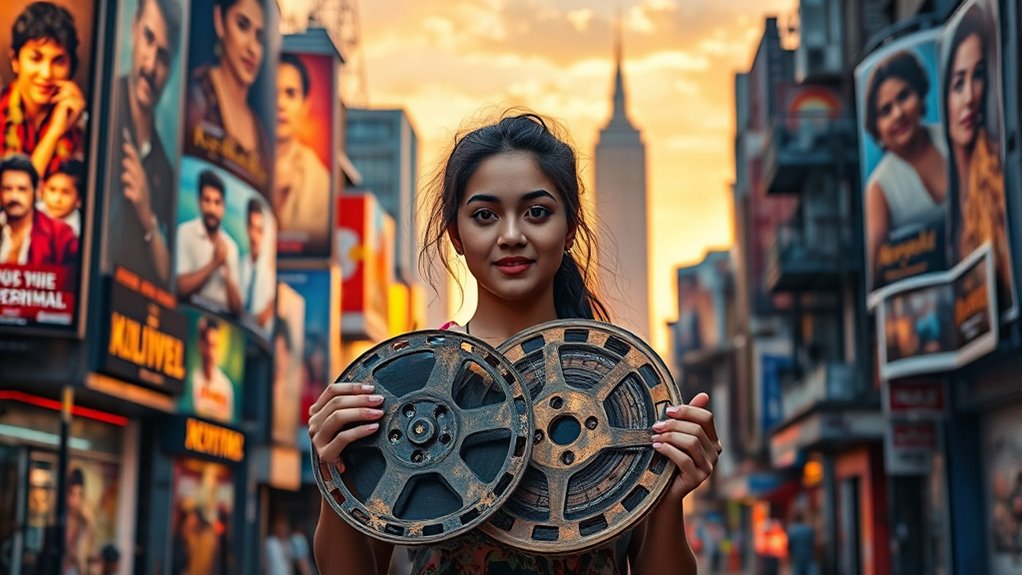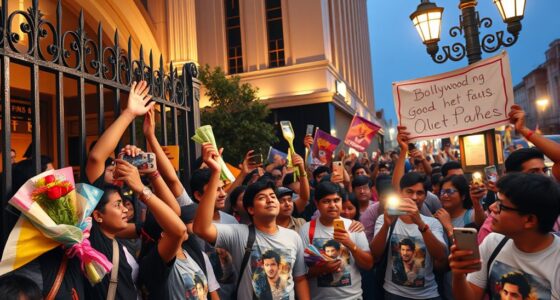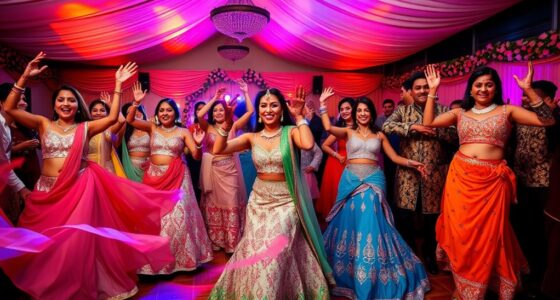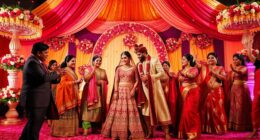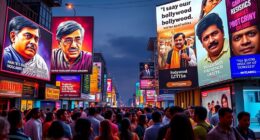Many Bollywood legends and urban legends blend fact and fiction, often fueled by myths, folklore, and sensational stories that get amplified through media and films. You might believe stories like stars changing names or haunted houses being genuinely paranormal, but most are exaggerations or cultural narratives. Understanding the origins and cultural significance helps separate fact from fiction. Keep exploring, and you’ll uncover how these myths shape perceptions and influence the industry’s storytelling.
Key Takeaways
- Many Bollywood star stories blend fact and fiction, often reinforced by media, creating enduring myths like Yusuf Khan becoming Dilip Kumar.
- Urban legends about haunted locations and supernatural events lack scientific proof, relying mainly on anecdotal and media-driven narratives.
- Cultural beliefs and psychological biases sustain myths about paranormal sites, despite investigations failing to confirm paranormal activity.
- Films frequently exaggerate folklore and myths for entertainment, sometimes distorting their original cultural significance.
- Recognizing embellishments and understanding cultural context helps debunk exaggerated or false claims in Bollywood and urban legends.
The Origins of Popular Bollywood Legends

Many popular Bollywood legends have roots in stories that blend fact and fiction, shaping the industry’s mythos over decades. Take the story of Devika Rani suggesting Yusuf Khan change his name to “Dilip Kumar.” This tale is widely circulated, with some biographical sources confirming it, and it helped mythologize the importance of a screen persona. The name “Dilip Kumar” became legendary, solidifying his status as an icon. Similarly, rumors about Dev Anand’s supposed marriage plans with Zeenat Aman, though unproven, fueled romanticized narratives that often exaggerate off-screen relationships. These stories, repeated in biographies and interviews, reinforce the idea that Bollywood legends are shaped by a mix of fact and fiction, creating enduring myths that influence industry lore today. This blending of stories has often been reinforced by unreliable magazine publications and urban legends that persist in Bollywood culture, highlighting how myth-making plays a crucial role in shaping star personas and audience perceptions. Furthermore, the widespread circulation of these tales demonstrates how urban legends can shape public perception and elevate stars to mythic status beyond verified facts. The persistence of these tales shows how public perception can be influenced by stories that are more myth than reality. In addition, the influence of evolving media and social narratives contributes to the ongoing myth creation surrounding Bollywood celebrities, often blurring the lines between truth and storytelling. Recognizing the role of media in propagating these stories helps us understand how narratives can be deliberately or inadvertently shaped by industry insiders and fans alike.
Fact-Checking the Haunted House Myths

While haunted house myths are a staple of Bollywood horror, verifying these stories reveals a lack of concrete evidence. Locations like Lal Bangla in Raipur and Agrasen Ki Baoli are often linked to supernatural tales, but most claims are based on local legends rather than factual proof. Paranormal reports tend to rely on anecdotal testimonies and dramatized media coverage, such as Zee TV’s *Fear Files*. Scientific investigations rarely find any verifiable evidence of paranormal activity, and many stories stem from cultural beliefs in spirits and curses. Historical sites like Bhuli Bhatiyari Ka Mahal and Kuldhara Village add to the lore, yet their haunted reputations remain unproven. Such stories are often perpetuated through oral tradition and media, which can amplify their popularity regardless of factual accuracy. Additionally, understanding the psychological influences behind these tales helps explain why they continue to capture the imagination of audiences. For example, confirmation bias plays a significant role in how people interpret ambiguous stimuli as paranormal phenomena. The media’s sensationalism further fuels the supernatural fascination, making it difficult to distinguish between myth and reality. The cultural narratives surrounding these myths help preserve their allure across generations. Moreover, the power of suggestion often heightens the perception of paranormal activity in supposedly haunted locations. Ultimately, these myths persist largely because of cultural narratives and psychological influence rather than factual validation.
Unveiling the Truth Behind Regional Urban Legends

Regional urban legends captivate local communities by blending cultural beliefs with intriguing stories, but uncovering the truth often reveals a lack of solid evidence. For example, the Karnataka legend of Naale Baa describes a witch knocking on doors at night, but no scientific proof confirms its existence. Similarly, the Mande Barung in Meghalaya is considered India’s Bigfoot, yet sightings are dismissed as folklore rather than facts. Stories from Tamil Nadu about ghostly activity in De Monte Colony are popularized in films, but no concrete evidence backs these claims. The Hindu Milk Miracle of 1995, where idols of Lord Ganesha reportedly drank milk, was later explained by natural causes. Despite skepticism, these legends persist, reflecting deep-rooted cultural beliefs rather than verifiable truths. Modern scientific investigations have consistently failed to find tangible proof for many of these phenomena, yet the stories continue to thrive in popular imagination. Additionally, advancements in scientific methods have made it increasingly difficult for such legends to hold up under scrutiny, but their cultural significance often prevents them from fading away completely. The role of cultural context is crucial in understanding why these stories endure despite a lack of scientific validation. Furthermore, psychological factors such as collective memory and confirmation bias contribute to their persistence. Moreover, cultural heritage plays a key role in shaping and maintaining these legends over generations. The psychological appeal of mystery and fear also helps sustain belief in these tales among communities.
How Films Use Myths as Cultural Symbols

| Mythological Element | Cultural Significance | Film Example |
|---|---|---|
| Archetypes | Symbolize complex ideas | Hero, villain, gods. These archetypes help audiences relate to characters and understand underlying themes. Additionally, archetypes serve as foundational storytelling elements that resonate across cultures and eras. Recognizing archetypes is essential for understanding how films reflect shared cultural narratives. |
| Symbols (colors, objects) | Add layers of meaning | Rebirth, justice. Visual symbols often carry deep cultural connotations that enhance storytelling. They serve as visual metaphors that deepen the audience’s emotional experience. |
| Deities as symbols | Embody ideals or conflicts | Shiva, Ramayana. Deities serve as powerful cultural symbols that represent moral values and societal conflicts. Their depiction often reveals societal aspirations and tensions. |
| Folklore and legends serve as cultural narratives that influence storytelling themes and character archetypes in films.
The Psychological Role of Legends in Society
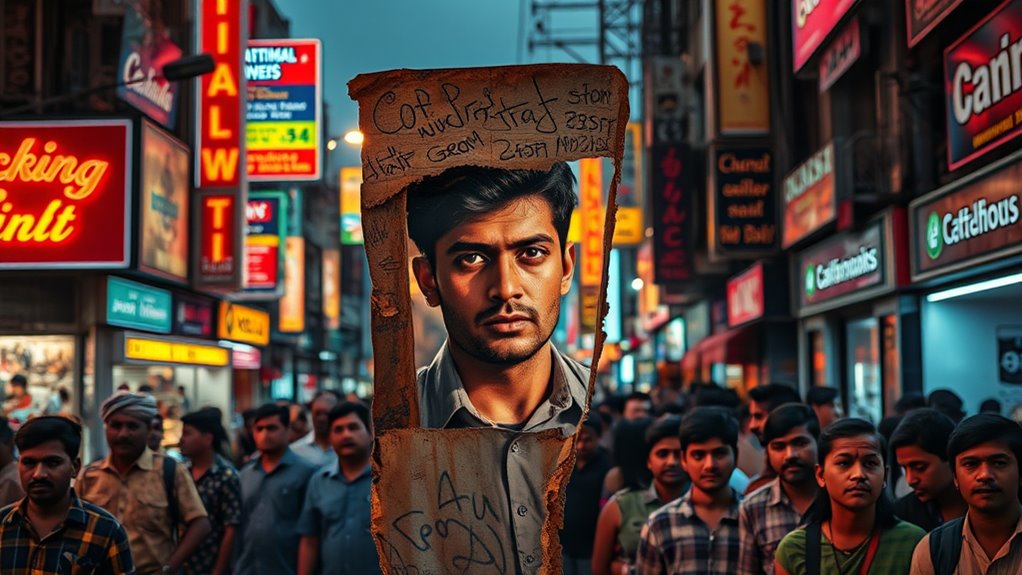
Legends often serve as outlets for our fears and anxieties, giving us a way to confront or release tension. They also help reinforce group identities and cultural norms, making us feel connected and understood. By staying within familiar stories, society creates a comfort zone that keeps shared beliefs and values intact. Additionally, these stories can serve as psychological coping mechanisms, helping individuals process complex emotions and social issues. For example, some legends reflect recurring dreams and their emotional significance, providing a symbolic outlet for unresolved feelings. Moreover, they can embody cultural norms that guide behavior and social expectations within a community. Understanding the religious and spiritual themes embedded in these legends can deepen our insight into their significance and impact. Recognizing how performance metrics influence storytelling can also shed light on their enduring relevance and evolution in society.
Myth as Anxiety Outlet
Urban legends serve as powerful outlets for societal anxiety by transforming ambiguous or extraordinary events into tangible stories that people can collectively process. They give a concrete focus to fears, validating collective or individual worries, and providing an emotional release. These legends evoke reactions like horror, shock, or humor, helping you manage discomfort caused by uncertainty or perceived threats. Even if you realize the stories might be untrue, they persist because they fulfill emotional needs and foster shared social experiences that ease anxiety. Urban legends often tap into partial truths or familiar fears, making them believable enough to serve as outlets. They help you feel a sense of control and understanding amid complex or threatening situations, easing societal tension through storytelling. Additionally, they often incorporate collective fears, which enhances their relatability and emotional impact. The psychological role of these stories highlights their importance in maintaining social cohesion during times of stress.
Legends Reinforce Identity
Have you ever wondered how stories from your culture shape your sense of belonging? Legends do more than entertain—they reinforce your identity by passing down shared beliefs and values. These stories help you understand your role within the community, highlighting cultural practices and norms. They foster group cohesion and cultural continuity, making you feel connected to your heritage.
| Cultural Aspect | Role of Legends | Impact on Society |
|---|---|---|
| Socialization | Impart shared beliefs | Builds community bonds |
| Identity Formation | Clarifies cultural role | Strengthens group identity |
| Moral Values | Reinforces norms | Guides behavior |
| Community Engagement | Creates shared experiences | Promotes unity |
Through symbols and stories, legends become powerful tools that shape who you are and how you connect with others.
Cultural Comfort Zones
Cultural comfort zones serve as psychological safe spaces where familiar norms and beliefs provide stability and reassurance. These zones influence how you perceive society’s expectations and respond to cultural norms, often shaped by legends and myths. Legends reinforce these zones by offering shared stories and values that create a sense of continuity and belonging. They also help define your cultural identity and foster social cohesion.
Consider these key points:
- Legends offer emotional comfort by tapping into deep-seated beliefs and feelings.
- They maintain cultural continuity, passing down traditions and norms.
- Challenging legends or stepping outside comfort zones can lead to growth, but also uncertainty.
Your connection to legends keeps you anchored while providing a foundation for societal change and adaptation.
The Impact of Bollywood Myths on Public Beliefs
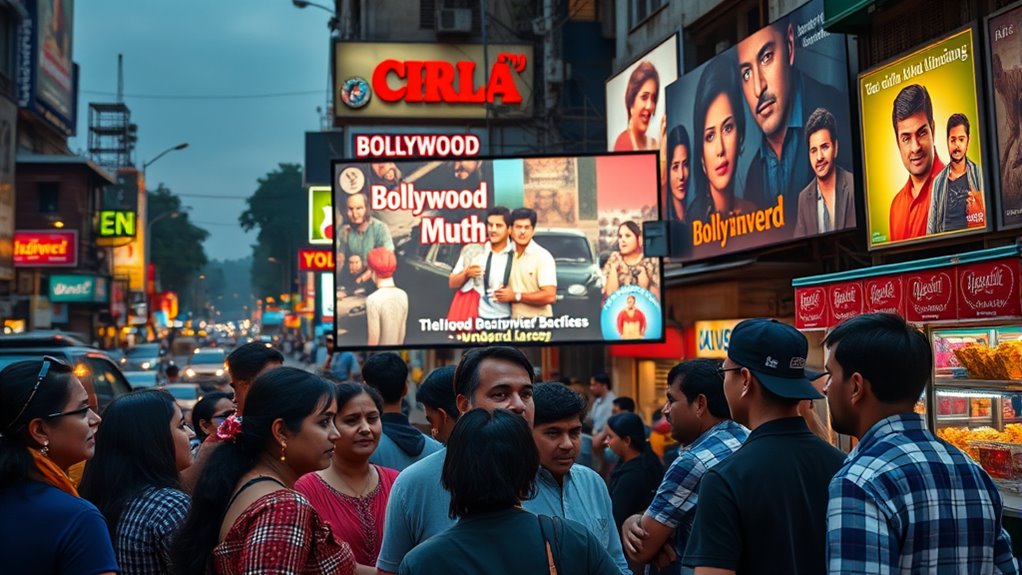
Bollywood myths profoundly influence public beliefs by shaping perceptions of culture and identity. When you watch myth-based films, you often find your views on tradition and modernity evolving. These stories strengthen connections to roots while encouraging curiosity about Indian heritage. Here’s how myths impact you:
| Effect | Description | Example |
|---|---|---|
| Cultural identity | Reinforces traditional values | Mythological films fostering pride |
| Attitudes toward tradition | Changes perceptions of cultural norms | Modern myth films challenging stereotypes |
| Stereotype influence | Shapes opinions on social issues | Challenging or reinforcing stereotypes |
| Political views | Swings public support and opinions | Films aligning with political agendas |
Your perceptions are influenced by what you see on screen, affecting beliefs about society, culture, and identity.
Separating Reality From Fiction in Indian Cinema

Bollywood’s portrayal of myths and legends often blurs the line between fact and fiction, shaping how audiences perceive Indian history and culture. To separate reality from fiction, keep these points in mind:
- Many films blend myths from various regions, making it hard to identify their true origins or whether they’re embellishments.
- Popular legends like “Nale Ba” or “Bullet Baba” are often dramatized, but their real stories are rooted in local beliefs or cultural practices.
- Bollywood frequently exaggerates supernatural elements, turning local folklore into entertainment, which can distort the actual facts.
Frequently Asked Questions
How Do Bollywood Films Influence Public Perception of Urban Legends?
You see, Bollywood films shape your perception of urban legends by presenting them as believable stories or even reality, making you more curious and convinced of their existence. Repeated exposure through movies reinforces these myths, blending fiction with reality. As a result, legends become ingrained in your culture, leading you to discuss and believe in them more, especially when modern visual effects make these stories seem more authentic and relatable.
Are Any Bollywood Myths Based on Verified Historical Events?
Think of Bollywood myths as colorful paintings on a historical canvas. While they often draw inspiration from real events, they mix facts with creative storytelling. For example, movies like “Jodhaa Akbar” are based on historical figures but dramatized for entertainment. So, some myths are rooted in verified history, but filmmakers often take liberties to craft compelling stories that influence public perception.
What Role Do Regional Beliefs Play in Shaping Bollywood’s Myth Narratives?
Regional beliefs play a big role in shaping Bollywood’s myth narratives by integrating local stories, symbols, and characters that resonate culturally. You’ll notice films often depict gods like Hanuman or Krishna, drawing from regional legends to deepen emotional and cultural connections. This blending helps filmmakers maintain authenticity, appeal to local audiences, and also reach a broader, global audience by showcasing India’s rich mythological traditions.
Can Urban Legends in Cinema Affect Real-Life Behaviors and Superstitions?
Urban legends in cinema are like seeds that can grow into real-life beliefs and superstitions. When you watch horror stories or superstitions portrayed on screen, they can influence your actions and perceptions, making fears feel more real. These legends shape behaviors by reinforcing old beliefs or creating new fears, spreading like wildfire through media. So, your reactions to these stories can directly impact your daily life and superstitions.
How Do Filmmakers Balance Entertainment With Cultural Sensitivity When Depicting Myths?
When you ask how filmmakers balance entertainment with cultural sensitivity, they focus on respecting traditions while crafting engaging stories. They research myths thoroughly, consult cultural experts, and aim for authentic portrayal. By balancing creative freedom with awareness of cultural nuances, they avoid misinterpretation and controversy. Engaging audiences thoughtfully helps ensure the films entertain without disrespecting the cultural roots, creating a respectful yet mesmerizing cinematic experience.
Conclusion
As you explore these stories, remember that legends often serve as gentle reminders of our shared hopes and fears. While some myths may seem more enchanting than true, they enrich our cultural tapestry in subtle ways. Embracing the truth behind these tales allows you to appreciate Bollywood’s magic without losing sight of reality. Ultimately, understanding the roots of these legends helps you find a deeper connection to the stories that shape your world.
